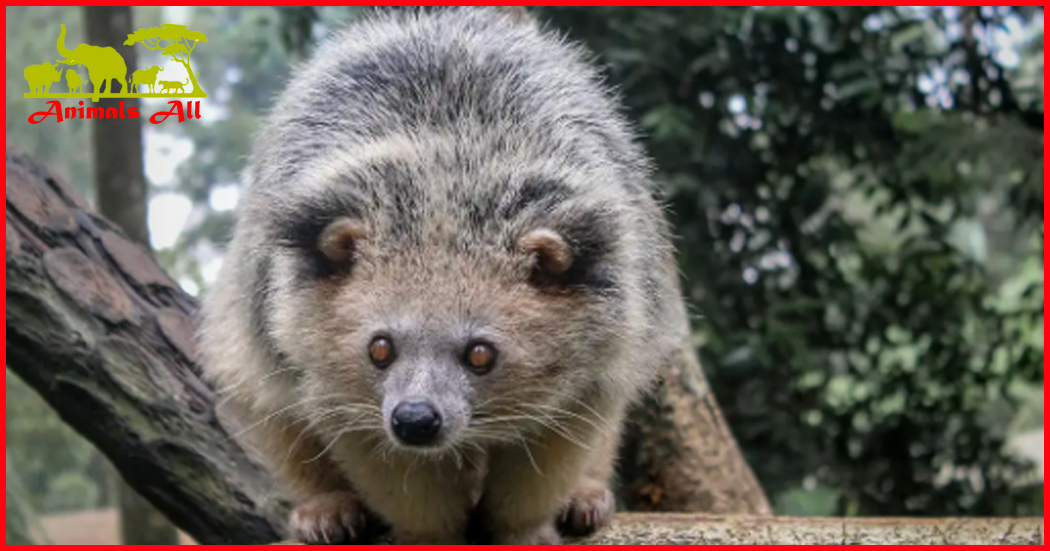
The binturongs fragrance is like popcorn.
The binturong has very unique appearance. Its head is characterized by a short snout and a wide zygomatic width that is more than half the total length of the skull. Its ear edges are white, and its fur is dark brown with grayish white tips, which gives its body a strong brown-gray hue. The binturong’s tail is as long as its body, has a tangled, fluffy, and rough fur. The fur on the back of its ears is long and tufted, and its limbs are strong, with sharp claws on its five toes. In addition, the binturong’s foot pads are large, covering almost the entire sole of the foot, which helps it climb and jump in trees.

The binturong is of medium size, about 70 to 80 cm long and weighing between 8 and 13 kg. Its fur is black with light brownish yellow. Tthe tips of the fur are stained with brownish yellow or brownish gray. The head, eye area, forehead and chin of the binturong are dark gray. There are long white whiskers beside the lips. Although it belongs to the order Carnivora, its canine teeth are not well developed, and its incisors are not as specialized as those of other carnivores.

Binturongs are mainly distributed in tropical areas of Southeast Asia, including India, Bangladesh, Nepal, Bhutan, Myanmar, Indonesia and the Philippines. In China, binturongs are mainly distributed in southwestern Guangxi, southeastern Tibet and Yunnan.
Binturongs are omnivores with a wide range of food choices. They mainly feed on plants, including fruits, young leaves, shoots, and certain small vertebrates. Binturongs particularly like sweets and have a strong preference for ripe bananas and mangoes. They also often eat figs. Because they eat too many figs, their feces will also contain fig seeds, which contributes to the spread of seeds.

Feeding habits
Binturongs occasionally eat meat, preying on insects, voles, small mammals, and birds. In addition, binturongs will catch fish and eat frogs. Caged binturongs have even shown a preference for foods such as fudge, muffins, apple pie, and milkshakes. However, consuming too much sugar may cause binturongs to become extremely manic and continue jumping and running until they fall asleep from exhaustion.

The breeding habits of binturongs have certain characteristics. Every spring, around February and March, binturongs enter the estrus period. During this period, binturongs will temporarily give up their solitary living habits and look for a suitable mate for mating. The reproduction cycle of binturongs is relatively short, with females having a gestation period of 90-92 days. After mating, female binturong will be pregnant for 2-3 months, and then give birth to 2-6 cubs in May. The cubs are born with their eyes close and rely entirely on their mother’s milk to survive. After about 6-8 weeks, the cubs are wean and begin to follow their mothers to learn foraging and survival skills. The reproduction rate of binturong is relatively high, with the number of cubs per litter ranging from 1-6, with an average of 2.
The main natural enemies of binturongs are birds of prey and large cats. Such as eagles and eagles, leopards and tigers. There is another special feature of the binturong’s butt, which is somewhat different from the butts of other mammals. The olfactory gland of the binturong is located between the buttocks and genitals, surrounding the perineum. This olfactory gland can secrete a very recognizable odorant. Which is describe as “sweet and fragrant, like buttered popcorn. Which is delicious and indescribable.”

